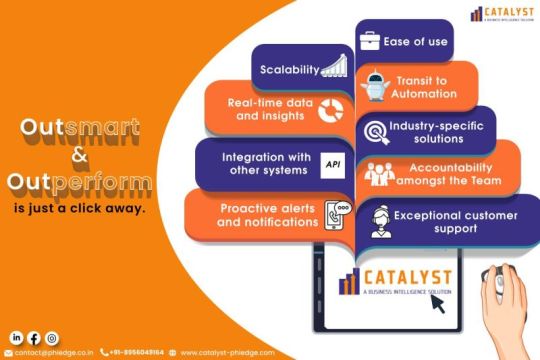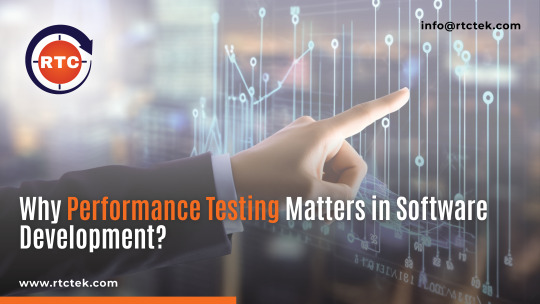#benchmarking software
Explore tagged Tumblr posts
Text
Details Presentation Belltree Ltd
We are a global software provider with a supporting consultancy business within the Upstream Oil and Gas Industry. Our team consists of reservoir engineers, geologists and data scientists. For 15 years, we have been a trusted partner of government regulators, NOCs and IOCs to maximize asset performance and identify hidden reserves potential in a sustainable manner.
22A/4 Calton Road,Edinburgh UK,EH8 8DP
+44 (0)131 225 3796
#benchmarking software#carbon capture and storage software#oil and gas benchmarking data#oil and gas benchmarking software.
0 notes
Text
Arc<[T]> vs Vec<T> & Arc<str> vs String
I put this comment underneath a video from ThePrimeagen's second channel, ThePrimeTime.
II did some clone benchmarking for Arc<[T]> and Vec<T> (avg. of 10000 clones):
Arc<[String]> improvement factor over Vec where v = (0..count).map(|i|i.to_string()).collect(): 1 element(s): 3.92x 10 element(s): 15.58x 100 element(s): 170.69x 1000 element(s): 1479.41x 10000 element(s): 13977.39x
Arc<[u8]> improvement factor over Vec where v = (0..count).collect(): 1 element(s): 2.32x 10 element(s): 2.18x 100 element(s): 3.34x 1000 element(s): 3.27x 10000 element(s): 6.21x
I chose these types because it gives the most advantage to each type, representing extremes. String, being non-Copy & 24 bytes, Arc<[String]> overtakes it by a ton, as Vec must allocate more and clone strings. u8, being Copy & 8 bytes, benefits Vec more, as the smaller size and copying shortcut makes reallocation and copying faster. But even then, Arc<[u8]> overtakes Vec, even with a single element.
I also did a String vs Arc comparison (s = String::from_utf8_lossy(&((0..elements).map(|_|thread_rng().gen_range(b' '..=b'~'))).collect::>()).to_string(), just a randomly generated string): 1 element(s): 1.72x 10 element(s): 1.75x 100 element(s): 1.81x 1000 element(s): 2.89x 10000 element(s): 4.73x
This is the closest comparison, but even then, Arc takes the lead.
Overall, Arc<[T]>/Arc performs much better than Vec/String for cloning. Of course, it is important to take into account if possibly sacrificing readibility and usability is worth the performance, but these are interesting results. You can think of using Arc<[T]> as a replacement for &[T] or &Vec, in which case it is much easier to manage.
Just for fun, I decided to repeat the Arc<[String]> vs. Vec comparison with longer strings ((0..elements).map(||String::from_utf8_lossy(&((0..chars).map(||thread_rng().gen_range(b' '..=b'~'))).collect::>()).to_string()).collect(), 1000 clones for performance reasons):
1 char(s), 1 element(s): 4.02x 1 char(s), 10 element(s): 18.10x 1 char(s), 100 element(s): 143.89x 1 char(s), 1000 element(s): 1720.46x 1 char(s), 10000 element(s): 14756.19x
10 char(s), 1 element(s): 3.89x 10 char(s), 10 element(s): 27.85x 10 char(s), 100 element(s): 247.02x 10 char(s), 1000 element(s): 1814.16x 10 char(s), 10000 element(s): 17717.06x
100 char(s), 1 element(s): 5.74x 100 char(s), 10 element(s): 15.95x 100 char(s), 100 element(s): 168.18x 100 char(s), 1000 element(s): 1525.42x 100 char(s), 10000 element(s): 24618.56x
1000 char(s), 1 element(s): 5.11x 1000 char(s), 10 element(s): 19.13x 1000 char(s), 100 element(s): 221.53x 1000 char(s), 1000 element(s): 2596.63x 1000 char(s), 10000 element(s): 112319.20x
10000 char(s), 1 element(s): 8.50x 10000 char(s), 10 element(s): 65.13x 10000 char(s), 100 element(s): 852.36x 10000 char(s), 1000 element(s): 61820.92x 10000 char(s), 10000 element(s): 598994.74x
Fascinating.
Disclaimer & extra info: Every Arc clone operation took ~60ns to perform. The results of this benchmark may not line up with other computers or codebases, but it's apparent That Arc<[T]> & Arc have substantial performance improvements over their Vec counterparts. Element count does not matter for Arcs, but it can be helpful to know when making tradeoffs.
This comment was fun to make, I didn't want it to go to waste.
Edit: It should be important to mention that there is a tradeoff. Arc<[T]> and Arc<str> are not mutable. Vec<T> and String are. Of course, that doesn't mean it's hard to create. In fact, with Arc<String>, conversions from Vec<T> -> Arc<[T]> and String -> Arc<String> are constant-time operations, as the data is not cloned, the pointer is simply moved between containers (Arc<str> must own the data, so it is cloned, which is why Arc<String>, which has as many features and basically identical performance, must be used to get constant-time conversion).
#rust#rustlang#programming#performance#speed#arc#string#coding#software engineering#software#development#benchmark
12 notes
·
View notes
Text
Please hold
The project to convert my buildscripts to Kotlin is on hold because I have an EXCITING NEW PROJECT.
Earlier this month (June 2024) Mazhar Akbar drew my attention to his performance comparison between JMonkeyEngine and Godot on a physics-intensive workload. The comparison favored Godot by a large margin. I was skeptical at first, but gradually I became convinced that, in order to level the field, JMonkeyEngine needs a new physics engine, one based on Jolt Physics instead of Bullet.
So now I'm coding all-new JVM bindings for Jolt. Jolt is an open-source software project of some complexity (about 100,000 lines of C++ code), so this could take awhile. Please hold. But not your breath.
I'm having a blast!
#software development#new project#open source#physics simulation#game engine#godot engine#coding#from scratch#java#computer software#jvm#open source software#don't hold your breath#having a blast#benchmarking#please hold#very excited
3 notes
·
View notes
Text
Balanced Scorecard Framework: A Catalyst for Effective Enterprise Performance Management

The term "catalyst" implies a substance that accelerates a reaction without being consumed itself. Similarly, the Balanced Scorecard Framework acts as a catalyst within the realm of EPM by accelerating the alignment of organizational objectives and strategies with actionable initiatives. Here's how:
1. Clarity in Objectives and Priorities
The Balanced Scorecard Framework begins with the identification and articulation of strategic objectives across the four perspectives. This process ensures that objectives are specific, measurable, aligned with the organization's mission, and interconnected. By involving key stakeholders in this process, organizations achieve clarity and consensus regarding what matters most.
2. Cascading Objectives Throughout the Organization
The Catalyst concept resonates strongly with the Balanced Scorecard's ability to cascade objectives and strategies throughout the organization. When objectives are clearly defined and communicated, they act as a catalyst for alignment. Each team and individual understands their role in contributing to the achievement of strategic goals.
3. Performance Measurement and Accountability
The framework's perspectives extend beyond financial metrics, encouraging a holistic view of performance. This enables organizations to measure progress and success across multiple dimensions. By establishing key performance indicators (KPIs) for each perspective, the Balanced Scorecard acts as a catalyst for accountability, encouraging continuous improvement and innovation.
4. Strategic Initiatives and Actionable Insights
The Balanced Scorecard's "cause-and-effect" relationships help identify the critical drivers of success. This insight guides the development of strategic initiatives that target specific areas for improvement. These initiatives act as catalysts for change, aligning resources and efforts toward achieving strategic goals.
Implementing the Balanced Scorecard Framework: Best Practices
To fully leverage the catalyst-like potential of the Balanced Scorecard Framework within an EPM context, consider the following best practices:
1. Leadership Commitment : Ensure strong leadership commitment and support for the implementation of the Balanced Scorecard Framework.
2. Stakeholder Involvement : Involve key stakeholders across all levels of the organization to gain insights and foster ownership.
3. Data-Driven Decision-Making : Leverage data and analytics to monitor KPIs and make informed decisions.
4. Regular Review and Adaptation : Continuously review and adjust the Balanced Scorecard based on changing business conditions and insights.
5. Communication and Transparency : Foster open communication about objectives, progress, and challenges to maintain alignment and engagement.
6. Focus on Strategy Execution: Use the Balanced Scorecard as a tool to execute strategy, rather than a mere measurement system.
#performance management#busniess#kpi metrics#kpi#business#benchmark#performance#employee tracking software#scorecard#business growth#business grants#growth analysis#okr software
2 notes
·
View notes
Text
What is Slack Used For?
Slack is a dynamic communication tool widely embraced by businesses and organizations to streamline their internal communications and workflow management. As a platform, Slack facilitates both synchronous and asynchronous interactions, making it a vital tool for modern, often remote or hybrid, workplaces. This blog explores the multifaceted uses of Slack, highlighting how it supports a variety of workplace functions.
Enhancing Team Communication
The primary use of Slack is to improve team communication. The platform allows users to create channels for different topics or projects, making it easy to organize conversations and keep relevant stakeholders in the loop. These channels can be open for anyone in the organization to join, or they can be made private for specific team members. This structure helps reduce email clutter and ensures that important information is accessible and centralized.
Furthermore, Slack supports direct messaging, which provides a quick way to reach colleagues for immediate questions or discussions. This feature helps maintain a steady flow of communication without the formality of emails, fostering a more dynamic and responsive work environment.
Streamlining Workflow with Integrations and Analytics
Slack's ability to integrate with a multitude of other tools and services is another reason for its widespread use. Whether it's project management software like Asana or Trello, version control systems like GitHub or CRM tools like Salesforce, Slack brings all these functionalities into one interface, enhancing productivity and minimizing the need to switch between apps.
Additionally, Slack analytics play a crucial role in optimizing team performance and engagement. By analyzing usage patterns and engagement levels within channels, organizations can gain insights into team dynamics, identify bottlenecks in communication and improve overall efficiency.
Conclusion
In summary, Slack is used for much more than just messaging—it's a comprehensive tool that supports efficient communication, project management and team collaboration. Through its powerful integrations and insightful Slack analytics, it helps organizations of all sizes maintain agility and foster a culture of openness and efficiency.
Read a similar article about software engineering productivity reporting here at this page.
#collaboration benchmarks#analytics software for workplace#slack analytics#meeting effectiveness metrics
0 notes
Text
Unveiling the Power of Google Ads Competitor Analysis

In the realm of online advertising, Google Ads reigns supreme as a potent tool for connecting with potential customers. However, maximizing the efficacy of your Google Ads campaigns necessitates a profound comprehension of your own performance metrics, alongside a strategic grasp of your competitors' maneuvers and tactics. This is where the significance of competitor analysis becomes pronounced – a methodical process that unveils invaluable insights, enabling you to refine your advertising endeavors and maintain a competitive edge.
#google ads competitor analysis tools#google ads competitor research#google ads keyword planner competitor analysis#google ads auction insights#google ads competitor analysis software#google ads competitive analysis tools#google ads competitor keywords#google ads campaign analysis tools#google ads competitor ad analysis#google ads competitor benchmarking
0 notes
Text
S24 Ultra vs S24+ vs S23 Ultra vs S22 Ultra Benchmark - April Update
The April 2024 update is out for the Galaxy S24 Ultra, S24 Plus and below so let’s put them up against each other and see how things are this month. We’re not quite on the OneUI 6.1 update on all phones (still have the S22 series to go) but soon I believe that’ll be coming out to the S22 range. 00:00 GeekBench 6 CPU 00:27 GeekBench 6 GPU 00:54 GeekBench ML 01:29 AnTuTu Benchmark 01:45 AnTuTu…

View On WordPress
#galaxy s24 ultra#galaxy s24 ultra aril update#galaxy s24 ultra vs s23 ultra#s23 ultra vs s24 ultra#s24 plus antutu benchmark#s24 plus benchmark#s24 plus vs s24 ultra benchmark#s24 ultra#s24 ultra after aril update#s24 ultra aril update#s24 ultra benchmark#s24 ultra benchmark antutu#s24 ultra benchmark score#s24 ultra benchmark test#s24 ultra vs s23 ultra#samsung galaxy s24 ultra#samsung s24 ultra#samsung s24 ultra aril software update
1 note
·
View note
Text
Final Fantasy XIV: Dawntrail Benchmark Software Lets You Test PC Performance And Create A Character Before Launch
New Post has been published on https://thedigitalinsider.com/final-fantasy-xiv-dawntrail-benchmark-software-lets-you-test-pc-performance-and-create-a-character-before-launch/
Final Fantasy XIV: Dawntrail Benchmark Software Lets You Test PC Performance And Create A Character Before Launch


Final Fantasy XIV’s next expansion, Dawntrail, arrives this summer alongside the game’s first graphical update. As such, Square Enix has released a new benchmark software to let PC players test how well their machines will handle these new bells and whistles while getting a small head start on Dawntrail.
Available as a free download for Windows, the benchmark software uses playable characters and actual maps to assign a performance score to your PC. This will provide a peek at the new graphical update, which spruces up the game with enhanced textures, shadows, material qualities, and other elements. You can download the benchmark here.
The benchmark includes a character creator for players to craft a fresh hero ahead of Dawntrail’s launch. It also includes access to the new female Hrothgar race. Existing characters can also be imported into the benchmark, and the appearance data from these characters can be imported into the full release of Dawntrail on Windows.
Final Fantasy XIV: Dawntrail launches on July 2. You can learn more about the expansion here. The game currently has a crossover event with Final Fantasy XVI that runs until May 8
#2023#2024#amp#benchmark#craft#data#eu#Features#Full#game#how#it#Learn#material#News#Other#PC#performance#Software#square#styles#windows
0 notes
Text
OCCT is the most popular all-in-one stability check and stress test tool available
OCCT started as a project when I was an exchange student in Oklahoma, USA, back in 2003. Everything began following a conversation on ICQ about verifying overclocking builds sent to a database. This led me to implement the first CPU test of and build a GUI around it. Despite being only launched on forums, was quickly spread through the overclocking community and raised in popularity very…
youtube
View On WordPress
0 notes
Text
Overcoming Employee Retention Challenges with Strategic [+Compensation Analysis & Real-Time Data]
Explore the step-by-step guide for strategic compensation analysis.
#salary negotiation#salary guide 2024#Salary trends#compensation analysis#Compensation market analysis#compensation analysis tools#compensation analysis software#compensation benchmarking analysis
0 notes
Text

In the contemporary digital environment, software's speed and reliability have become more important than ever! Users expect seamless experiences with lightning-fast response times. Several circumstances make performance testing important, including:
1. The Increasing Demands of Users 2. The Rise of Cloud-Based Applications 3. The Growing Complexity of Applications 4. Increasing Competitive Environment
Check out our latest blog at https://rtctek.com/why-performance-testing-matters-in.../ to discover why performance testing matters and how Round The Clock Technologies can help ensure your software exceeds user expectations.
#performancetesting#software#loadtesting#stresstesting#scalabilitytesting#capacitytesting#performanceengineering#benchmarking#latencytesting
0 notes
Text
.
#being an absolute hater here but yall-know-which-game thats just come out............................#my pc cant run it since they upped the min requirements and i have an xbox so theres that#and i though 'oh i could play it on my partners steam deck that things runs everything really well'#and i check a benchmark video and it runs like absolute fucking shit like unstable fps texture popping and all that stuff#every videogame thats come out lately is So badly optimized its honestly unbelievable#its like optimization is a complete afterthought for every single developer no matter how big or small#we really should go back to the ps2 era where if your game was fucked you just had to do another physical release no more day one patches#maybe that way developers will remember your software actually needs to be able to run on a machine for people to play it
0 notes
Text
TIL JMH
Today I used the Java Microbenchmark Harness (JMH) for the first time: https://github.com/openjdk/jmh
I created an open-source software project to compare the performance of single-precision transcendental functions in 3 math libraries: https://github.com/stephengold/UBench
I even collected some data, though I haven't had time to analyze it yet.
#open source#software development#today i learned#accomplishments#mathematics#java#library#benchmark#performance#new skills
0 notes
Text
How do you benchmark a CPU?

To access the CPU benchmark test, press Windows Key + R to open the run menu. In the box type PERFMON and hit enter. Here is where you can run a performance monitoring test that can benchmark the performance of your CPU as well as give you insights into the stats of your other hardware.
https://top10pcsoftware.com/best-cpu-benchmark-software/
1 note
·
View note
Text

#CX report#customer experience insight report#mobile app testing#user testing#ux usability#testing tool#automated test#social media#performance benchmarking#crowdtesting#mobile testing tools#device experience#web usability#social media marketing analytics#survey platform#software quality tools#benchmarking#system testing tools#social media sites for business#marketing data platform#cx assessment#testing applications#customer journey score#customer happiness score
1 note
·
View note
Text

We help businesses unfold their true potential and grow in a dynamic world with innovative and creative digital solutions. Offering a range of IT solutions and services in Data Analytics, Product Engineering Services, Cloud, and other value-added services. We give an extra push in empowering businesses with a flexible and agile delivery system that showcases unprecedented levels of performance and customer delight. We strongly believe in continuous improvement through building and transferring digital expertise, skills, and ideas from our innovative ecosystem.
#managed services provider in Dubai#managed it services in UAE#software development company in Dubai#cyber security consultant UAE#tech solutions provider Dubai#Digital Marketing Services in UAE#Benchmark Solutions provider
0 notes